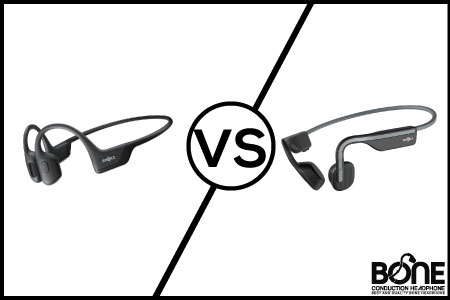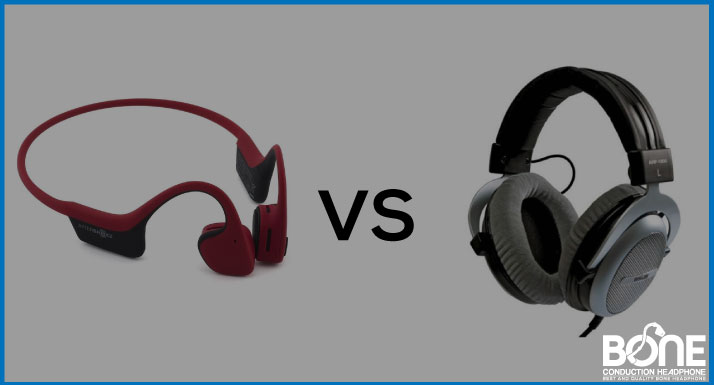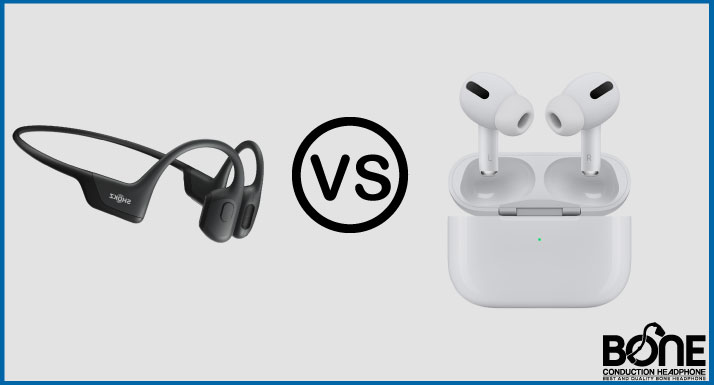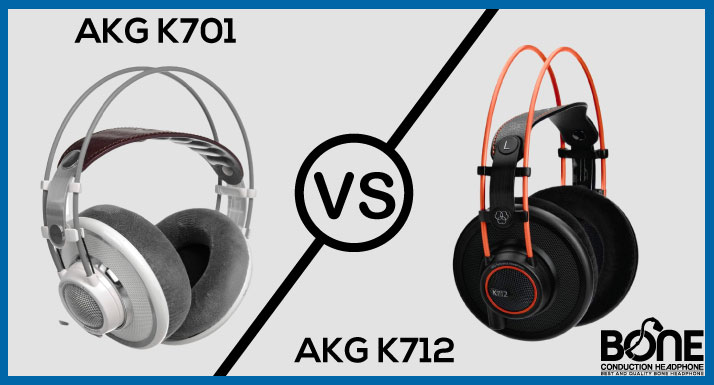The 770, 880, and 990 from the Beyerdynamic DT Series are an excellent choice if you want studio headphones with a wide range of versatility at a reasonable price. The headphones are primarily for studio use and not for consumer use on portable devices.
To sum up, the DT 770 headphones are the first of the three models. These are closed-back headphones with plentiful bass and sound isolation. With its semi-open ear cups, the DT 880 provides the most versatility. With an open-back earcup design and minimal ambient noise reduction, the DT 990 is the most updated version. DT 880 is the most expensive model, and DT 770 is the cheapest.
[amazon box=”B0006NL5SM,B000F2BLTM,B0011UB9CQ” template=”table”]Let’s explore these gadgets more closely.
Pros and Cons
Before diving deep into the details, let me give a quick overview of these headphones.
DT 770
Pros
- It is pretty versatile. Although it has a distinctive sound, it can handle a wide variety of genres.
- It’s very comfortable. The headphones engulf your ears, and some describe them as feeling like pillows.
- They provide good isolation. Though they are not noise-canceling headphones, they block out incoming noise well while remaining quiet to those around you.
- They are pretty durable. Their durability is quite impressive.
- Excellent sound quality with stunning clarity. While not neutral, these headphones can pick up flaws in bad recordings, so be aware. They have good clarity, however. You will discover details in songs you haven’t noticed before.
- The Soundstage is excellent. It has nice imaging and a wide, nuanced soundstage, which impressed many people. Despite this being somewhat rare for closed-back models, some excel in this area. This is the case with the 770.
- It has a long wire with excellent durability.
- It comes with a carrying case.
Cons
- It can be sibilant at the high end, causing fatigue.
- While the bass is a bit overwhelming for some, it still has plenty of impacts and mostly sounds good.
DT 880
Pros
- A very high degree of accuracy, “surgical.”
- Excellent as a reference and mixing headset.
- You will not regret investing in these flagship audiophile headphones. Quite simply, the price-to-performance ratio is unbelievable.
- Crisp midrange and fantastic bass response with a sound amplifier.
- It’s very comfortable.
- The headband can be replaced.
- Excellent Soundstage.
- A superb overall build (standard for DT products).
- The sound is pleasing to listen to and is appreciated by casual listeners and producers alike.
- Earpads (or earmuffs, as some reviewers call them) can be replaced.
Cons
- There may be a bit of an exaggeration at the high end for some. Many have complained that it is too shrill and harsh.
DT 990
Pros
- It has a great soundstage.
- I love the open, spacious sound; I think it is the most open and “large” sounding of the three.
- The level of comfort is impeccable. This is what Beyer is known for.
- They are ideal for gaming and films. With the 990, you get a satisfying mix of fun, V-shaped sounds of the 770 and more analytical, “reference” style sounds of the 880.
- It has excellent build quality. You will not be replacing these for a long time.
- If you watch films, play games (competitively or not), mix tracks, or just listen to music casually or critically, this would be an excellent headphone for you.
Cons
- There don’t seem to be any. The treble will be a complaint from some, but I would tend to disagree.
A comparison Table of the Beyerdynamic DT 770, 880, and 990
| Model | DT 770 | DT 880 | DT 990 |
| Design type | closed-back | semi-open | open |
| Fit | circumaural (over-ear) | circumaural (over-ear) | circumaural (over-ear) |
| Comfort Rating | Good | Good | Good |
| Frequency response | 5 Hz – 35 kHz | 5 Hz – 35 kHz | 5 Hz – 35 kHz |
| Total Harmonic Distortion (THD) | NA | NA | NA |
| Headband | soft padded headband construction | soft padded headband construction | spring steel, soft cushioning |
| Nominal impedance level | 32 / 80 / 250 | 32 / 250 / 600 | 80 / 250 |
| Material | velour earpads, plastic, pleather | velour earpads, plastic | velour earpads, rugged plastic, meta |
| Sound pressure level | 96 decibels | 96 decibels | 96 decibels |
| Contact pressure | Comfortable (2.8 N) | Comfortable (2.8 N) | Comfortable (2.8 N) |
| Case | Artificial leather bag | Artificial leather bag | Artificial leather bag |
| Color | black, gray, silver | black, gray, silver | black, gray, silver |
Beyerdynamic DT 770, DT 880, and DT 990 Descriptive Comparison
Design
Every model in the DT series has a different design. We have the DT 770 with a closed-back design, the DT 880 with a semi-open design, and the DT 990 with an open-back design. We’ll explore these briefly in more detail.
DT 770
A closed-back design provides an exceptional bass response on the DT 770. The best of the three is probably this one. Despite the absence of a noise-canceling mechanism, noise isolation occurs as a natural result of the same. Particularly useful in environments with less-than-ideal conditions for critical listening.
DT 880
On the other hand, these headphones feature semi-closed earcups, which strike an excellent balance between an open and closed-back cup design. There are also some cons to each, however. Neither the bass response nor the noise-isolation is as effective as it should be. Nevertheless, they block out most of the ambient noise around you. Additionally, you might be able to use them in public while commuting since the minimal sound they produce outside is unlikely to disturb others.
DT 990
Of the three models, this is the only one with open-back cans. Furthermore, they do not have enclosed ear cups so they will provide a much calmer, more ventilated fit. The ‘breathability’ contributes to a smoother signal flow and a more relaxing audio experience. The flipside of this design is that it requires a quiet, optimized listening environment to operate effectively. You can’t use these headphones if there is excessive noise around you.
Comfort
They are all extremely comfortable to wear. It is due to the thick, luxurious ear muffs that are characteristic of this series. Weight and build do indeed matter.
DT 770
DT 770 headphones weigh about 1 pound, making them not exactly lightweight. They’re compact and comfortable to wear on your shoulders and neck. As a result of their closed-back design, they are pretty tight, so you will need to take breaks between listening sessions.
DT 880
Although the DT 880 are comfortable headphones, they place uneven pressure on your ears. A soft microfiber fabric covers the ear cups, which feels nice against the skin. Out of the box, the DT 990s are not quite as snug as the DT 990s, but the ear cups’ angle causes an uncomfortable amount of pressure between your jaw and your earlobe, which can get a bit tiring after wearing them for a while.
DT 990
Although these headphones are a bit heavier (0.1 ounces), their open-back design makes them slightly more comfortable. Although they are a bit heavier (0.1 ounces), their open-back design makes them somewhat more relaxed. From a comfort perspective, these are probably your best choice out of the three.
Related Post: Grado SR60e vs SR80e
Sound
It’s here that we get into the details. Ultimately, how good your headphones sound is what matters the most. The DT 990 offers the most immersive listening experience of the three headphones. One reason for this is the open-back design of the earcups. Second place goes to the DT 880, while the DT 770 finishes in third place, still well deserving of respect. Comparatively speaking, it is still one of the best brands out there.
Bass
There is no discernible difference between the DT 770 and DT 880 in terms of low bass response. Both sound good.
However, this doesn’t necessarily mean that the DT 990’s low-end has poor performance. Here, its character is just a little more subdued and subtle. As a trade-off, it offers much more comfort than the other two.
It is essential to keep in mind that ‘more’ bass does not necessarily mean better bass. On all three, the low-frequency signal quality is also excellent. There is just a slight difference in response.
Mids
This spectrum has two winners: the DT 880 and DT 990. Their open-back and semi-open ear cup designs make this easy to attribute.
On the other hand, the DT 770 offers decent detail in the mid-range frequency. However, it is not one of its most vital points.
Treble
Here, the DT 990 comes out on top. And by an unexpectedly large margin, as well. It is difficult for the DT 770 and DT 880 to keep up with their crystal clear response and detail. This headphone strikes the right balance between clarity and brilliance without being harsh. Even so, some prefer DT 770 and DT 880, more restrained and sober outputs.
DT 770
The 770 is the most “fun” sounding of all of them. While the bass shelf is elevated below 100Hz, the midrange is surprisingly straightforward and present, even with the low-end emphasis.
There is still a sense of life to the vocals and the instrumentation, which is why I think the 770 has gained something of a cult status over the years.
These headphones retain the excellent quality of music without giving the feeling that sound is distant or muffled, which occurs in some other bass-oriented headphones that ignore mids for a lot of low-end impact and slam.
As for the treble, how you slice it will remain bright, somewhat piercing, or shrill may help you identify the treble. As a closed-back design, DT 770 may be the most isolating among all three, but it has the most issues regarding a balanced response.
DT880
The DT880 is probably the most neutral out of the 3, with the only real peak occurring around 6kHz. Some find it off-putting, but by and large, it’s a sound signature that works incredibly well when mixing down tracks and in studio situations.
The 880 can be used for both casual and professional purposes. Some years back, David Mahler, out of Brooklyn, NY, wrote about 58 headphones that Head-Fi ranked highly. Only four models received a value rating of A+, one of which was the DT880.
While the mid-range is just about perfect, its bass response is neither boosted nor rolled off.
The slight emphasis is found around the presence region (3kHz), and it’s done tastefully.
I don’t believe that the DT880 is near as bright outside 6Khz as people have claimed over the years.
DT990
It is the most open-sounding headphone among these three and the second most neutral. Although this headphone has received a bad rap over the years, I feel that sentiment isn’t warranted both when hearing it myself and when looking at graphs.
I felt everything was in alignment with the 990’s sound – it was clear, open, and detailed without sounding distorted or muddy. The mid-range is relatively neutral, and the treble is emphasized, but it doesn’t sound harsh or grating in any way.
[amazon box=”B0006NL5SM,B000F2BLTM,B0011UB9CQ” template=”table”]Build
These models are more or less the same in terms of build. The DT770 and 880 models come with button-up headbands, while the 990 models don’t. Generally, they all have velour padding, a click mechanism on the headband, and a similar aesthetic.
DT 880 headphones are sturdy and well-built so that they won’t break in the event they fall from your desk. Their build quality is also excellent, made of premium materials. The ear cups are better built and have metal enclosures than the plastic on the DT990 PRO, but their frame is not as sturdy as the DT990 PRO. There are; however, some exposed cables going to the ear cups.
DT 770 headphones are durable and sturdy. As with the DT 990 Pro, they are made from solid metal, and their ear cups will stay intact even if they are dropped. However, the ear cup enclosures feel somewhat plasticky compared with the premium ear cups of the DT880s.
All of them are built exceptionally well and feel durable in hand. Having held these headphones, I was impressed by their agility and lightweight without feeling cheap. I get the sense that they can hold up to a lot of use.
You should note that none of these headphones come with detachable cables, but they are rugged and durable headphones. I found a couple of reviews from people who have been using them for five and ten years.
While they can handle a lot of abuse, there are some things to be noted about these earcups in particular. Some say they don’t go deep enough and that your ear may become in contact with the driver. If you have smaller ears, it will not matter. Due to the driver getting dirty, you may hear a slight buzzing or rattling sound. You may experience different results, but my personal experience has not been bad.
In a sense, it tends to attract hair and other undesirable elements.
Related Post: AKG K701 vs K712
Imaging & Soundstage
Although all three headphones deliver fantastic Imaging and Soundstage, you’ll find that the 770s are perhaps the most surprising in this regard. Those who are new to headphone hunting may be inclined to think this closed-back headphone is below average.
Its staging is also one of the reasons why it has a cult-like following. In addition to headphones like the CB-1 and MDR-Z1R, this is the closest I’ve heard to sounds like an open-back.
Despite its unabashedly V-shaped signature on the surface, it does so many things right, making it impossible to complain.
Similarly impressive (if not even more impressive) is the Soundstage on both the 880 and 990. The sentiment is amplified even more, with the 880 and 990 being semi-open and open (respectively). With the 880, there is some isolation, but with the 990, there is none.
Connectivity
Each of the headphones includes a cable that connects to your audio system via a 3.5 mm stereo jack connector. Its included adapter converts it to 6.3 mm, just like most headphones in its price range. Wireless compatibility is not available on any of these headphones.
Gaming & Reference
770s have been debated over their gaming merits, but I would not use it full-time for gaming, even though it could work in a pinch. My preference is to have the 770 for film, the 880 for mixing/mastering/referencing, and the 990 for gaming.
An 880 may even be preferable for competitive gaming since it doesn’t place much emphasis on anything (aside from 6kHz). Among these 3, the 880 is the best at hearing everything clearly and accurately, so I use it for reference.
For gaming, the choice is 880 vs. 990. For single-player gaming, I’d choose a 990, but for multiplayer games or FPS shooters, I’d prefer an 880.
This is not a set-in-stone decision. Either way could work for you.
[amazon box=”B0006NL5SM,B000F2BLTM,B0011UB9CQ” template=”table”]Price
As price is one of the most important aspects for many buyers, let’s discuss the official and street prices of the DT770, 880, and 990.
The Beyerdynamic DT 770 headphones are the cheapest on the company’s official website, while DT 880 and DT 990 headphones are in the same price range. However, online marketplaces’ street prices vary slightly from their online counterparts.
The DT 770 is cheaper than the DT 880 or DT 990 if purchased directly from the brand. This is because they are newer models. DT 880 is, in fact, the most expensive version.
Related Post: Sennheiser HD 450BT vs HD 458BT
Conclusion
Although all three headphone models are great, the DT 880 offers more choices for the listener. You can use them indoors and outdoors without bothering anyone or suffering any loss in audio quality.
Despite not being overly expensive and bearing similarities to the other two (same ear muffs, similar weight, same aesthetic component), they have the edge over the DT 770 and 990 merely because of their more balanced Soundstage.


![SteelSeries Arctis 7+ vs 7P+ [Detailed Comparison Guide]](https://www.boneheadphonesera.com/wp-content/uploads/2022/06/SteelSeries-Arctis-7-plus-vs-7P-plus.jpg)

![SteelSeries Arctis 1 vs 3 vs 5 [Detailed Comparison Guides]](https://www.boneheadphonesera.com/wp-content/uploads/2022/06/SteelSeries-Arctis-1-vs-3-vs-5.jpg)

